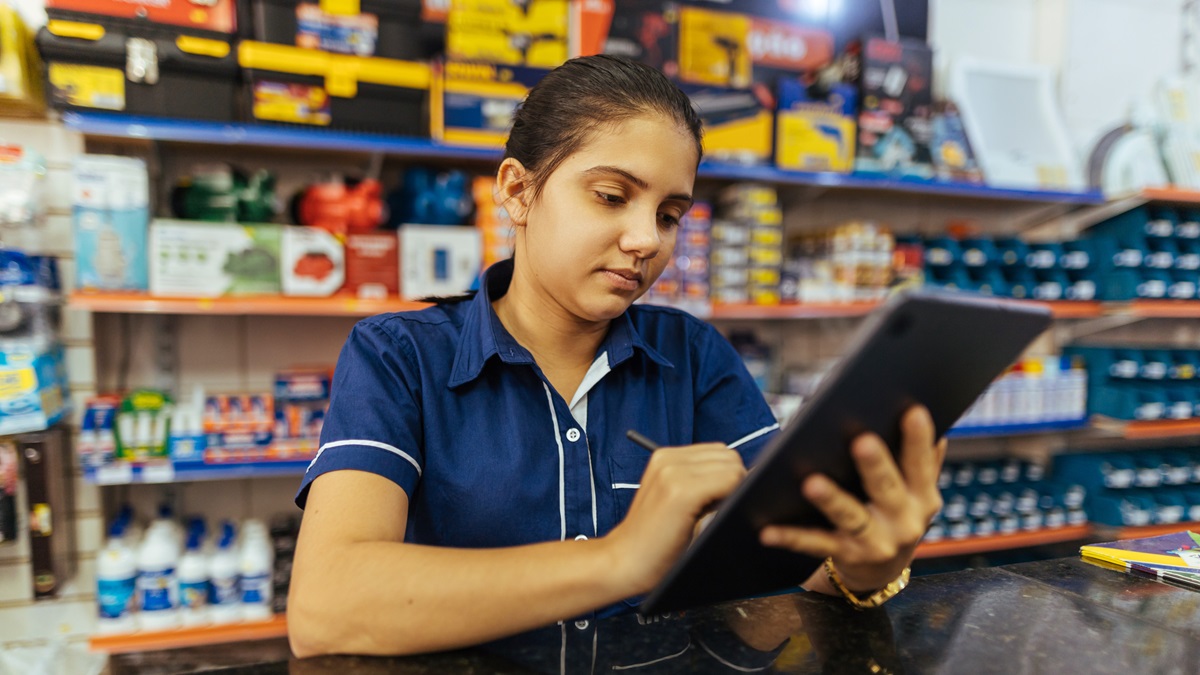Marking World Consumer Rights Day, UNCTAD renews calls for policymakers and businesses to recognize and tackle existing bias hindering women in the marketplace.

© Shutterstock/Kleber Cordeiro | A woman entrepreneur in Latin America. Digital transformation helps connect businesses with consumers worldwide in real time.
As primary decision-makers of household spending, women play a key role in shaping market trends and the broader economy.
But at the same time, they continue to experience stereotyping, exploitation and vulnerabilities across markets.
These can range from unfair marketing practices and misleading advertising to hazardous products and gender-based price differences, where women pay more than men for similar products.
How can policies, companies and individuals push for the systemic change to empower women consumers? Here are five things to know.
1. Consumer protection advances gender equality
“We need consumer protection to safeguard fair markets,” says Teresa Moreira, head of competition and consumer policies at UNCTAD.
“This also helps protect women's rights by ensuring they have access to information, education, and products and services for their health and well-being.”
Promoting gender equality in the marketplace not only concerns fairness, but also ensuring that broader gains from trade extend equitably to women.
By empowering them as consumers and active participants in the economy, policymakers and businesses can help build a more just and inclusive society for all.
2. Need to reduce the gender data gap on consumer protection
Historically, a complex interplay of socioeconomic factors and market practices relegates female consumers to a disadvantaged position.
For example, women tend to find it harder to access credit in financial services, due to perception of their investment preference and capability.
In other cases, product designs are biased by male thinking, especially in areas – such as automobiles and technology – traditionally dominated by men.
Compounding the challenge is a lack of disaggregated data to understand the specific vulnerabilities women commonly face in the marketplace.
Inaction on the gap risks hampering market surveillance and targeted measures to step up advocacy for women consumers.
3. How is UNCTAD helping?
UNCTAD is the UN system’s focal point for consumer protection issues, and promotes the UN’s guidelines for consumer protection.
The guidelines recognize the vulnerability of consumers and the imbalance in terms of economic capacity, education level and bargaining power.
The UNCTAD working group on consumer protection and gender is currently developing proposals of action to tackle advertisement, product safety, and financial issues affecting women’s rights as consumers.
More broadly, UNCTAD’s also works to strengthen the capacity of developing countries to mainstream gender equality and women’s empowerment in trade and development policymaking.
4. What more can be done?
Technological innovation, fintech and digitalization can be powerful tools to enhance women’s financial literacy and access to essential services.
These can be mobile apps offering guidance to empower women as informed consumers, or providing a safe, transparent channel for grievances reporting and dispute resolution.
Additionally, stronger frameworks for consumer protection will remain crucial to fending off financial fraud, privacy breaches and other forms of exploitation in the digital marketplace.
5. Looking ahead, what are the recommendations for policymakers?
Consumer protection and gender equality go hand in hand.
Advancing this double cause requires concerted efforts to tailor laws and policies, which represent the groundwork: recognizing women’s unique perspectives and ensuring their full and safe participation in the economy.
In this regard, trade policies need to be assessed before implementation.
Tools such as UNCTAD’s trade and gender toolbox provide a systematic methodology to guide policymaking, and help ensure that trade continues to contribute to a more gender-equal world.


